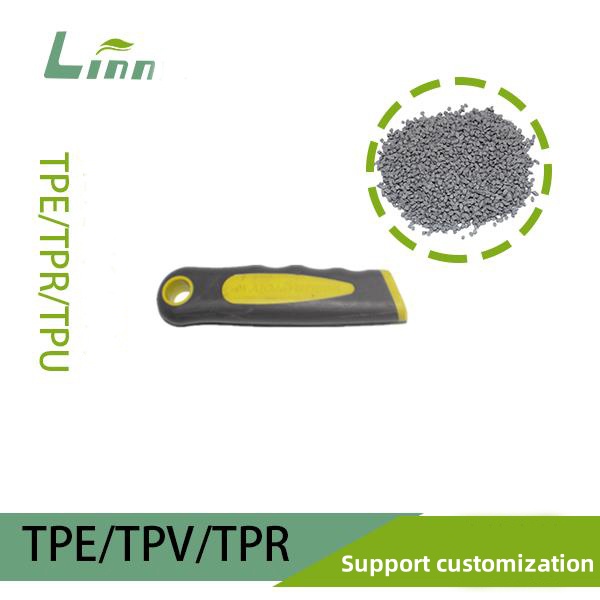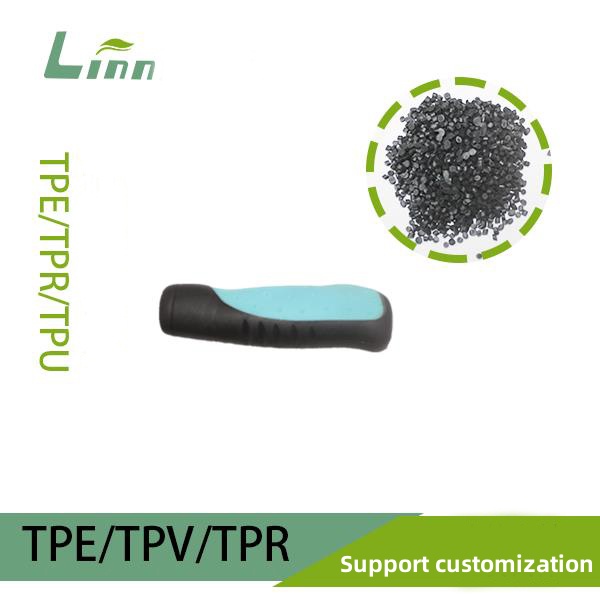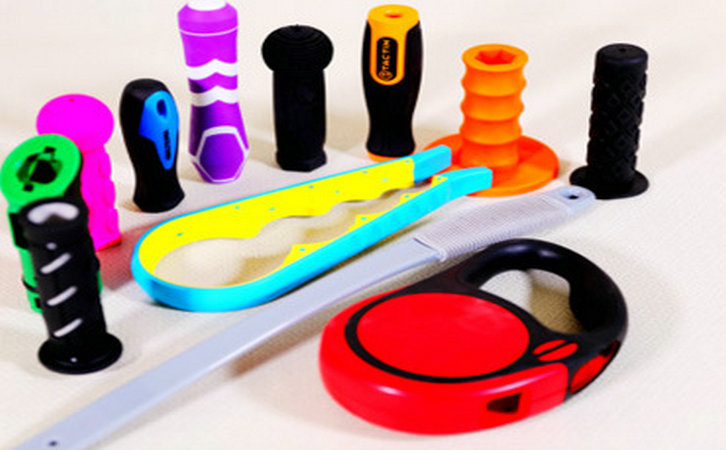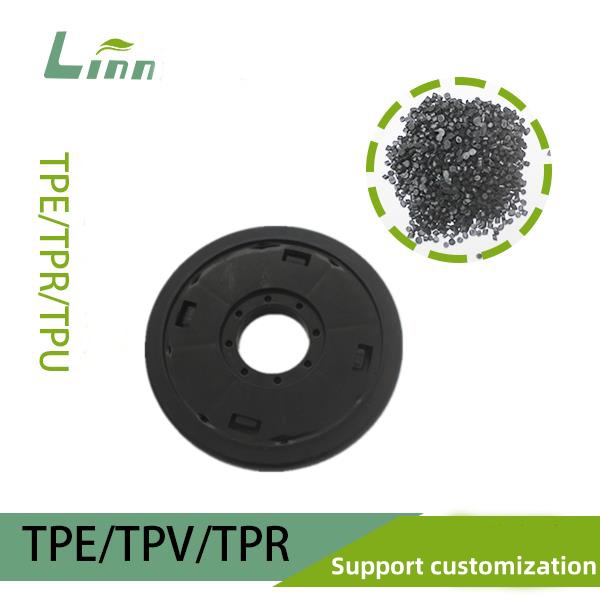I remember the panic in a client’s voice when they called me late one evening, saying, “We’ve got a batch where PVC (Polyvinyl Chloride) and TPR (Thermoplastic Rubber) got mixed, and now the parts are failing!” It was a classic case of material mishap—brittle surfaces, poor flexibility, and a production line on the brink of shutdown. Over my years in the plastics industry, I’ve seen this scenario more than once, and it’s always a headache. Mixing PVC and TPR, whether by accident or design, can lead to a host of problems due to their differing chemistries and properties. But it’s not a lost cause. In this article, I’ll share my experience on what happens when these materials mix, why it’s problematic, and practical steps to fix or prevent the issue. My goal is to guide you through this mess with clear, hands-on advice that feels like a chat with someone who’s been in the trenches. Let’s dive in and sort this out!
Understanding PVC and TPR
To tackle the issue of mixed PVC and TPR, let’s first understand these materials. PVC is a rigid or flexible thermoplastic, depending on plasticizer content, widely used for pipes, cables, and footwear soles. It’s based on a vinyl chloride polymer, often stabilized with additives like calcium carbonate or phthalate plasticizers. PVC is cost-effective but can be brittle without plasticizers and is sensitive to high temperatures.
TPR, a thermoplastic elastomer (TPE), is typically based on SBS (Styrene-Butadiene-Styrene) or SEBS (Hydrogenated Styrene-Butadiene-Styrene) block copolymers. It’s prized for its rubber-like flexibility, recyclability, and use in shoe soles, grips, and seals. TPR relies on plasticizers like mineral oil and fillers to adjust hardness (e.g., Shore A 20-90).
When PVC and TPR mix, their incompatible chemistries—PVC’s polar vinyl structure versus TPR’s non-polar styrene-based backbone—can cause phase separation, weak mechanical properties, and processing nightmares. I’ve seen mixed batches produce parts that crack, delaminate, or fail under stress. Below, I’ll explain why this happens and how to handle it.

Why Mixing PVC and TPR Causes Problems
Mixing PVC and TPR, whether accidentally (e.g., contaminated pellets) or intentionally (e.g., attempting a blend), creates issues due to their fundamental differences. Here are the main reasons problems arise, based on my observations in production and lab settings:
1. Chemical Incompatibility
PVC is a polar polymer, while TPR (SBS or SEBS) is non-polar. This mismatch prevents them from blending at a molecular level, leading to phase separation. The result is a material with weak interfaces, like oil and water trying to mix.
Symptoms: Grainy texture, delamination, or brittle surfaces.
Example: I once saw a mixed batch form a marbled appearance, with PVC-rich and TPR-rich zones that cracked under flexing.
2. Different Processing Temperatures
PVC processes at 160-190°C, while TPR typically requires 150-220°C, depending on the grade. Mixing them can lead to:
Overheating PVC: Causes degradation, releasing hydrochloric acid (HCl) gas, which corrodes equipment and weakens the material.
Underheating TPR: Results in poor flow, uneven mixing, and weak parts.
3. Incompatible Additives
PVC often uses phthalate plasticizers, while TPR uses mineral oils. These additives don’t mix well, causing:
Plasticizer Migration: Oils from TPR can seep out, creating an oily surface or weakening bonds.
Stabilizer Conflicts: PVC’s heat stabilizers (e.g., calcium-zinc) may not protect TPR, leading to degradation.
4. Mechanical Property Mismatch
PVC (especially rigid) is less flexible than TPR, which is designed for elasticity. Mixing them dilutes TPR’s rubbery properties, resulting in:
Brittleness: The blend loses TPR’s stretchiness, cracking under stress.
Reduced Strength: Poor phase adhesion weakens tensile and tear strength.

5. Regulatory and Safety Issues
For applications like medical devices or toys, mixed materials may not meet standards (e.g., FDA, REACH, or EN71-3 for toys, EN71-3 toy safety). Contaminated blends can introduce non-compliant additives, risking recalls.
Here’s a table summarizing these issues and their impacts:
|
Issue |
Cause |
Symptoms |
Impact |
|---|---|---|---|
|
Chemical Incompatibility |
Polar PVC vs. non-polar TPR |
Grainy texture, delamination |
Weak, brittle parts |
|
Processing Temperature |
Different melt ranges (PVC: 160-190°C, TPR: 150-220°C) |
Degradation, poor flow |
Equipment damage, defective parts |
|
Incompatible Additives |
Phthalates vs. mineral oils |
Oily surface, weak bonds |
Poor adhesion, reduced durability |
|
Mechanical Mismatch |
Rigid PVC vs. elastic TPR |
Brittleness, low strength |
Parts fail under stress |
|
Regulatory Issues |
Non-compliant additives |
Fails safety standards |
Risk of recalls, legal issues |
Diagnosing the Problem
When PVC and TPR mix, the first step is to confirm the issue and assess its scope. Here’s how I approach diagnosis:
Visual Inspection: Look for marbling, graininess, or oily surfaces on molded parts. Cracks or delamination under flexing are telltale signs.
Material Testing: Use Fourier Transform Infrared Spectroscopy (FTIR) to identify PVC and TPR in the blend. This confirms contamination.
Mechanical Testing: Perform tensile and tear tests (ASTM D638, ASTM D638) to check for reduced strength or elasticity.
Process Review: Check processing records for temperature, screw speed, and material batch details. Cross-contamination often occurs during material changes.
Supplier Traceability: Verify pellet batches with supplier certificates of analysis (CoA) to identify contamination sources.
I once helped a client whose TPR shoe soles were brittle. FTIR revealed 20% PVC contamination from a shared extruder. Tracing the batch confirmed improper cleaning between runs. Diagnosis is critical to finding the right fix.

Solutions for Handling Mixed PVC and TPR
Fixing a PVC-TPR mix depends on whether the mixing was accidental or intentional and the extent of the issue. Below, I’ve outlined solutions for both scenarios, based on my experience.
1. Accidental Mixing (Contamination)
If PVC and TPR were mixed unintentionally (e.g., contaminated pellets or equipment), the goal is to separate, clean, or mitigate the damage.
a. Separate Materials
Manual Sorting: If pellets are visibly different (e.g., color or size), sort them manually or with a vibratory separator. This is labor-intensive but effective for small batches.
Density Separation: PVC (density ~1.4 g/cm³) is denser than TPR (~0.9-1.1 g/cm³). Use a liquid density separator (e.g., water with additives) to float TPR and sink PVC.
Melt Filtering: For mixed pellets, extrude the blend through a fine mesh filter to remove PVC clumps, though this may not fully purify TPR.
b. Clean Equipment
Purge Extruders: Run a purging compound or high-density polyethylene (HDPE) through the extruder at 180-200°C to remove residual PVC or TPR. Repeat until clean.
Disassemble and Clean: For severe contamination, disassemble screws, barrels, and dies, cleaning with solvents like acetone (for TPR) or isopropyl alcohol (for PVC).
Prevent Future Mixes: Label material hoppers clearly and dedicate equipment to PVC or TPR where possible.
c. Salvage the Batch
If separation isn’t feasible, the mixed batch may still be usable for low-value applications:
Adjust Processing: Lower temperatures (160-180°C) to minimize PVC degradation. Use low shear to reduce phase separation.
Add Compatibilizers: Add a compatibilizer like maleic anhydride-grafted SEBS (1-5% by weight) to improve PVC-TPR bonding. This can reduce brittleness but won’t fully restore properties.
Use for Non-Critical Parts: Divert the blend to non-critical applications (e.g., filler parts) that don’t require high flexibility or regulatory compliance.
2. Intentional Mixing (Blending)
If you’re trying to blend PVC and TPR intentionally (e.g., to combine properties), it’s tricky but possible with careful formulation.
a. Use Compatibilizers
Maleic Anhydride-Grafted Polymers: These (e.g., MAH-g-SEBS or MAH-g-PP) act as molecular bridges, improving PVC-TPR compatibility. Add 2-5% by weight during compounding.
EVA (Ethylene Vinyl Acetate): EVA can bridge PVC’s polarity and TPR’s non-polarity. Use 5-10% to enhance blending.
b. Optimize Additives
Plasticizers: Use a universal plasticizer like dioctyl adipate (DOA) that works for both PVC and TPR, avoiding migration issues.
Stabilizers: Add calcium-zinc stabilizers for PVC and antioxidants for TPR to protect against degradation.
Fillers: Use silica or low levels of calcium carbonate (<20%) to maintain flexibility.
c. Control Processing
Temperature: Process at 165-185°C to balance PVC and TPR melt flows. Avoid exceeding 190°C to prevent PVC degradation.
Low Shear: Use a twin-screw extruder with gentle mixing to minimize phase separation.
Pre-Compounding: Blend materials in a high-shear mixer before extrusion to ensure uniformity.
I once worked with a client blending PVC and TPR for a low-cost sole. Adding 3% MAH-g-SEBS and processing at 170°C produced a usable, flexible material, though it wasn’t as elastic as pure TPR. Intentional blending requires testing and compromise.

3. Preventing Future Mixing
To avoid future mix-ups:
Segregate Materials: Store PVC and TPR pellets in separate, labeled containers. Use color-coded bags for easy identification.
Dedicated Equipment: Assign separate extruders or injection molders for PVC and TPR if production volume allows.
Clean Transitions: Purge equipment thoroughly when switching materials. Use purging compounds and verify cleanliness with test runs.
Train Staff: Educate operators on material differences and contamination risks. Regular training reduces errors.
Here’s a table of solutions for mixed PVC and TPR:
|
Scenario |
Solution |
Steps |
Pros |
Cons |
|---|---|---|---|---|
|
Accidental Mixing |
Separate materials |
Density separation, melt filtering |
Recovers usable material |
Labor-intensive, incomplete |
|
Accidental Mixing |
Clean equipment |
Purge with HDPE, solvent cleaning |
Prevents future contamination |
Time-consuming |
|
Accidental Mixing |
Salvage batch |
Add compatibilizers, use for non-critical parts |
Minimizes waste |
Reduced properties |
|
Intentional Blending |
Use compatibilizers |
Add MAH-g-SEBS or EVA |
Improves bonding |
Adds cost, complex |
|
Prevention |
Segregate materials |
Label, dedicate equipment |
Avoids mix-ups |
Requires organization |
Testing and Quality Control
To ensure a mixed PVC-TPR batch is usable or to verify fixes, testing is crucial. Here’s my approach:
Material Composition: Use FTIR or differential scanning calorimetry (DSC) to quantify PVC and TPR content. Aim for <5% contamination for critical applications.
Mechanical Testing: Perform tensile strength (ASTM D638) and elongation tests to check flexibility. Compare to pure TPR specs (e.g., elongation >300%).
Adhesion Testing: For molded parts, use a peel test (ASTM D903) to check surface integrity. Weak adhesion indicates phase separation.
Environmental Testing: Expose parts to UV, heat, or chemicals (ASTM G154, ASTM G154) to ensure durability.
Third-Party Analysis: For regulated products, send samples to labs like SGS or Intertek to verify compliance with REACH or FDA standards.
Testing saved a client’s project when a mixed batch showed 10% PVC contamination. We salvaged it with a compatibilizer for non-critical parts, avoiding a full scrap.

Case Studies: Handling PVC-TPR Mixes
Here are two real-world examples from my career:
Case 1: Contaminated TPR Shoe Soles
A footwear manufacturer found brittle TPR soles due to 15% PVC contamination from a shared extruder. We used density separation to recover 80% of the TPR, purged the extruder with HDPE, and added 2% MAH-g-SEBS to the remaining blend for low-value soles. The cleaned TPR was reused for high-quality production, and new segregation protocols prevented recurrence.
Case 2: Intentional PVC-TPR Blend for Cable Covers
A client wanted a PVC-TPR blend for flexible cable covers to balance cost and elasticity. We compounded 60% TPR, 30% PVC, 5% EVA, and 5% DOA plasticizer at 175°C with a twin-screw extruder. The blend achieved Shore A 70 hardness and passed flex tests, though it required UV stabilizers for outdoor use.
These cases show how tailored solutions can turn a problem into an opportunity.
Preventing Long-Term Issues
To keep PVC and TPR from mixing in the future:
Implement SOPs: Create standard operating procedures for material handling, equipment cleaning, and batch tracking.
Use Automation: Install material identification systems (e.g., RFID-tagged hoppers) to prevent mix-ups.
Audit Suppliers: Verify pellet purity with supplier CoAs and random testing.
Invest in Training: Regular workshops for operators reduce human error.
Monitor Processes: Use real-time sensors to track extruder conditions and detect anomalies.
I’ve seen companies cut contamination incidents by 90% with clear SOPs and dedicated equipment, saving time and money.
Future Trends in Material Handling
The plastics industry is evolving to reduce issues like material mixing:
Smart Material Tracking: RFID and IoT systems are improving material traceability, preventing mix-ups.
Advanced Compatibilizers: New grafted polymers are making PVC-TPR blends more viable for niche applications.
Recycling Innovations: Technologies like solvent-based separation are recovering mixed plastics for reuse.
Eco-Friendly Alternatives: Bio-based TPR and PVC substitutes are reducing reliance on incompatible materials, aligning with the EU’s Circular Economy Action Plan (EU Circular Economy).
These trends are making material management more precise and sustainable.

Frequently Asked Questions
Here are answers to common questions about mixed PVC and TPR:
Q1: Can I use a mixed PVC-TPR batch for production?
A: For non-critical parts, yes, with compatibilizers like MAH-g-SEBS. For critical applications, separate or purify the materials to avoid failures.
Q2: How do I know if my batch is contaminated?
A: Look for grainy textures, brittleness, or marbling. Use FTIR or DSC to confirm PVC and TPR presence.
Q3: Is blending PVC and TPR worth it?
A: It can work for cost-driven applications with compatibilizers, but pure TPR or PVC is better for performance. Test blends thoroughly.
Q4: How do I clean a contaminated extruder?
A: Purge with HDPE or a purging compound at 180-200°C, then disassemble and clean with acetone or isopropyl alcohol.
Q5: What standards apply to mixed materials?
A: For regulated products, ensure compliance with REACH, FDA, or EN71-3. Mixed batches may fail due to non-compliant additives.
Wrapping Up
Mixing PVC and TPR can throw a wrench in your production, but it’s a problem you can tackle with the right approach. Whether it’s separating contaminated pellets, salvaging a batch with compatibilizers, or preventing future mix-ups, my years in the industry have shown me that careful diagnosis and testing are the keys to success. From shoe soles to cable covers, handling this issue well can save time, money, and headaches. I hope this guide gives you the tools to navigate a PVC-TPR mix and come out on top.
If you’re dealing with a mixed batch or have questions about material handling, drop a comment—I’m happy to share ideas and help you find solutions. Here’s to keeping your production line running smoothly and your parts performing flawlessly!





